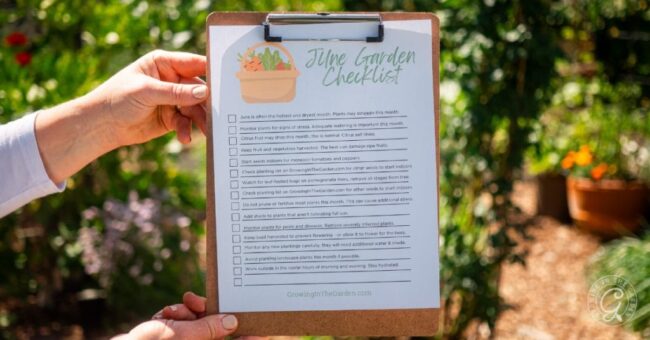

If you spend time in an Arizona garden in June, you’ll likely enjoy bountiful harvests and beautiful blooms, especially early in the month. Spring and warm-season crops are wrapping up, and harvest baskets are often full. But as the month progresses, the garden shifts from production to survival.
June is typically the driest and one of the hottest months in the low desert. With an average high of 105°F (40.6°C) and only 0.12 inches of rain, your plants, trees, and soil feel the strain. This month can be a turning point—what you do now can help your garden endure the harsh summer ahead.
In this post, you’ll learn how to maximize your garden’s potential in June:
- Which essential tasks to tackle
- How much and how often to water
- Common pests to watch for
- How to keep plants healthy through the heat
When you’re working in the garden this month, stick to the cooler morning or evening hours and stay hydrated.

Wondering what to plant this month? Head over to the What to Plant in June blog post for a detailed list of vegetables, herbs, and flowers that grow well in the low desert this time of year.
Download the Jne Garden Checklist at the top of this post to stay on track all month long.
This guide is designed for low-desert gardeners in the Southwest, including areas with elevations below 3,500 feet, such as Phoenix, Tucson, and surrounding communities.
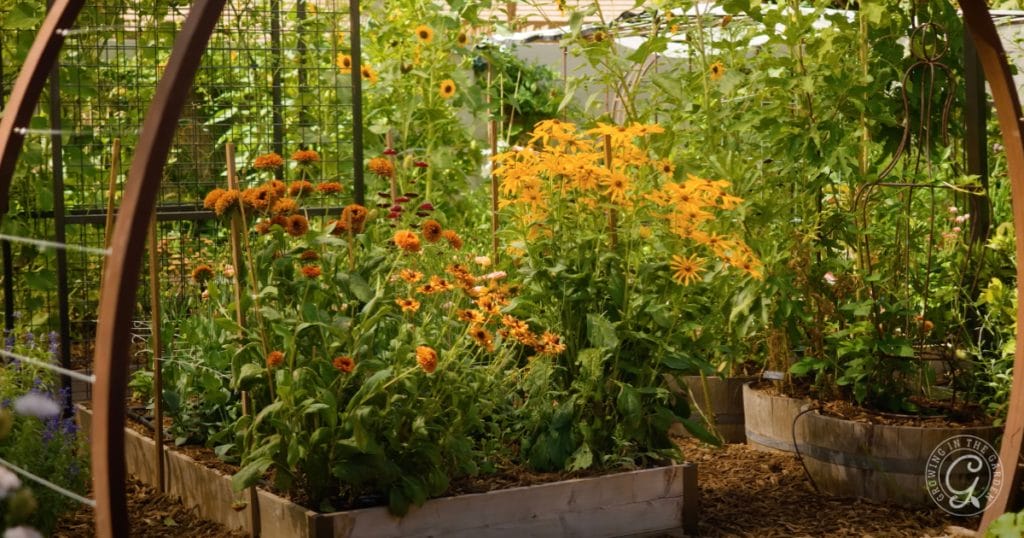
Click on the title to jump to that section and learn more about what to do during June:
- Vegetable Gardening
- Pests and Wildlife
- Container Gardening Tips
- Flower Gardening
- Herb Gardening
- Fruit Trees and Citrus
- Landscape Plants
Vegetable Gardening in the Low Desert Arizona Garden in June

Stay Ahead of the Heat
This month, hot, dry temperatures are affecting the garden. Correct timing, watering, shade, and mulching are essential.
- Mulch: If you haven’t already, add a thick layer (3–5 inches) of mulch to your garden beds. I use the wood chip mulch from Arizona Worm Farm.
- Shade: Use shade cloth to protect annual vegetables, or plant them in areas that receive afternoon shade. I use this shade cloth to reduce sun stress.
Harvest and Transition
- Onions and Garlic: Harvest any remaining onions and garlic at the beginning of the month and cure them indoors.
- Cucumbers: If your cucumbers are bitter, heat may be the cause. Remove those plants and switch to Armenian-type cucumbers, which don’t get bitter. Learn more about bitter cucumbers in this blog post.
- Beans: Warm-season bush beans finish up this month. Replace them with heat-loving types like asparagus beans or black-eyed peas. Here’s how to grow asparagus beans.
Tomato Tips for Summer
- High Night Temps: Once nighttime temperatures stay above 75°F (24°C), tomato pollen may not be viable and fruit set can slow.
- Ripening Indoors: If tomatoes are slow to ripen, bring them inside once they show a flush of color. Learn how to ripen tomatoes indoors.
- Plan Ahead: Start seeds indoors for a monsoon tomato planting. Check the planting lists for other seeds to start now.
Summer Soil Care
- Cover Crops: Consider planting a summer cover crop in empty beds to keep the soil alive. Learn more about summer cover crops here.
Manage Summer Crops
- Melons: Provide support for trellis-grown watermelon and cantaloupe as they begin to grow heavier.
- Squash & Other Warm-Season Crops: Remove any plants that are no longer producing or show signs of heat stress or disease.
Watch for Disease
- Powdery Mildew: This fungal disease is common in June. Learn how to treat powdery mildew to help affected plants recover.

Vegetable Watering Guidelines for June
June can be one of the most challenging months for your garden. Both overwatering and underwatering can stress or damage plants—getting it right is key.
- Check Your System: If you haven’t already, inspect your irrigation system and timer. Run the system to check for leaks, clogged emitters, and ensure all areas are being watered correctly.
- Adjust for the Heat: As temperatures rise, annual vegetables need more frequent watering. Aim to water to a depth of 8–12 inches every 2–4 days, allowing the top of the soil to dry out between waterings.
- Raised Bed Tip: I use the Garden Grids from Garden in Minutes to water my raised beds efficiently and evenly. Use code ANGELA10 to save $ 10 off $ 100 or ANGELA to save 7% on any order.

SUBSCRIBE TO MY GARDEN JOURNAL
Receive exclusive insights directly from my garden to your inbox with “GITG Academy + Low Desert Tips.”
Twice a month, I’ll share my personal garden journal. From the first seedling to the last harvest, you can follow my gardening adventures in Arizona’s unique low desert.
Join me, and let’s make your garden thrive under the desert sun!
Low Desert Arizona in June: Pests & Wildlife to Watch Out For This Month
Common Garden Pests to Watch for in June
Squash and Melon Pests
- Squash Bugs: Monitor squash and melon plants for squash bugs in all stages—adults, eggs, and nymphs. Keep a bucket of soapy water nearby to drop them into. This blog post explains how to prevent and treat squash bugs.
- Leaf Miners on Melons: Leaf miners can be found on cantaloupe and other melons. Remove affected leaves to slow the spread.

Tomatillo and Ground Cherry Pests
- Three-Lined Potato Bugs: These pests are a common nuisance on tomatillos and ground cherries. If spotted, check plants several times a day and drop them into soapy water. If populations grow too large, it may be best to remove the plant entirely.
- Look for: Eggs, larvae, and adult beetles.

Sunflowers and Roses
- Aphids and Lace Bugs: You may still see aphids or chrysanthemum lace bugs on sunflowers. Hopefully, beneficial insects like lacewings and ladybugs are already at work. If not, you can remove damaged leaves and spray off the bugs with water.
- Leaf-Cutter Bees: Circular notches in leaves on roses, pomegranates, or other plants are caused by leaf-cutter bees. This cosmetic damage is harmless. These solitary bees are excellent pollinators and not a cause for concern.
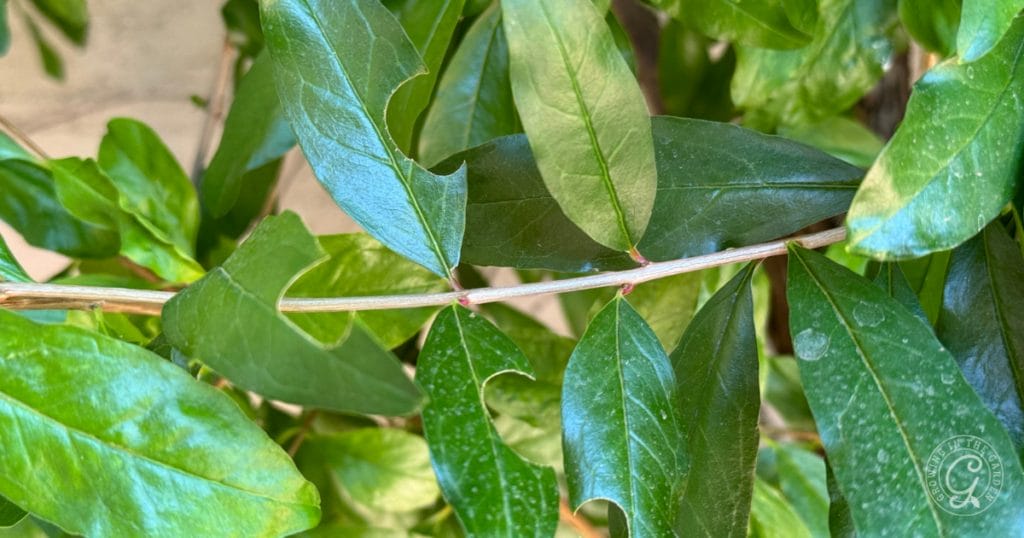
Tomato, Pepper, and Eggplant Pests
- Tomato Hornworms: Watch for insect frass (droppings) or chewed leaves as signs of tomato hornworms. Look closely on stems and leaves, handpick them, and feed to chickens if you have them.
- Look for: Large green caterpillars and their droppings.
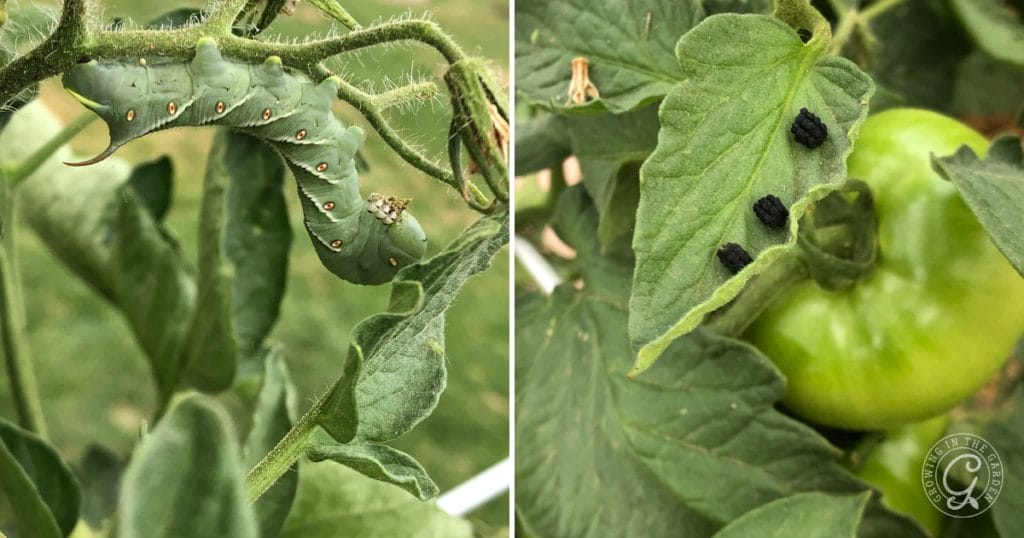
Bean Pests
- Rollie-Pollies (Pill Bugs): If seedlings—especially beans—are being eaten before sprouting, apply a small amount of slug and snail bait containing iron phosphate when planting. It’s safe for worms and pets but effective against pill bugs and slugs.
- Spider Mites: Common on beans in hot, dry weather. This blog post explains how to prevent and treat spider mites.
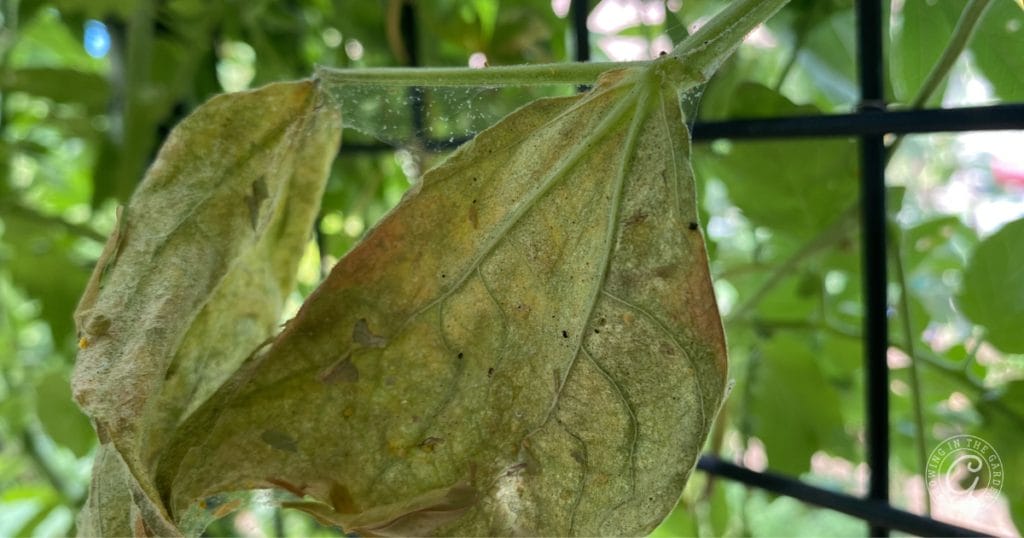
Grape Vines
- Grapeleaf Skeletonizers: These caterpillars can quickly defoliate grape vines. If caught early, remove affected leaves and handpick eggs and caterpillars. For larger infestations, treat with Bt (Bacillus thuringiensis), using it only on affected areas and as directed.

Pomegranate Trees
- Leaf-Footed Bugs: Monitor closely for all stages—eggs, nymphs, and adults. Daily vigilance and hand removal into soapy water is the most effective method for controlling this difficult pest.
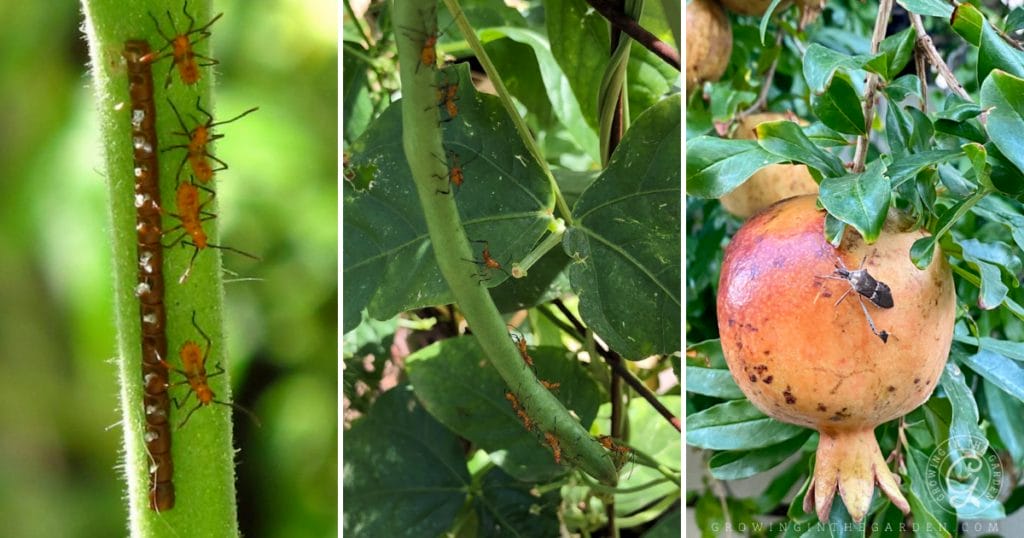
Wildlife and Beneficial Insects:
- Lovebirds and lesser goldfinch are commonly seen on sunflowers this time of year. They love the seeds, and the lesser goldfinch also enjoy eating the leaves. I love watching them in the garden.
- Bees, hoverflies, wasps, lacewings, praying mantids, syrphid flies, parasitic wasps, assassin bugs, and other beneficial insects are active now.
- Gulf fritillary butterflies in all stages, swallowtail butterflies, hummingbirds


Low Desert Arizona in June: Container Gardening Tips

- If possible, put small containers away until the fall. The soil from the containers can be used as mulch or added to compost.
- Move containers to areas of your yard that receive afternoon shade naturally.
- Group containers and grow bags close together for an insulating effect.
Container Watering Guidelines:
- As temperatures rise, closely monitoring containers and watering them frequently is crucial. You may have to water every day. If you’re not sure, use a moisture meter to check soil moisture levels.
- If containers dry out too much, the soil may become hydrophobic. When watering, check the soil to ensure water is absorbed and not repelled by hydrophobic soil.
- Add ollas to containers to help with watering during the summer. I use ollas from Growoya.
If you’re using containers in a hot climate, Elevated Garden Bed Tips for Hot Climates shares strategies to help your garden thrive when temperatures soar.

Flower Gardening in the Low Desert Arizona Garden in June
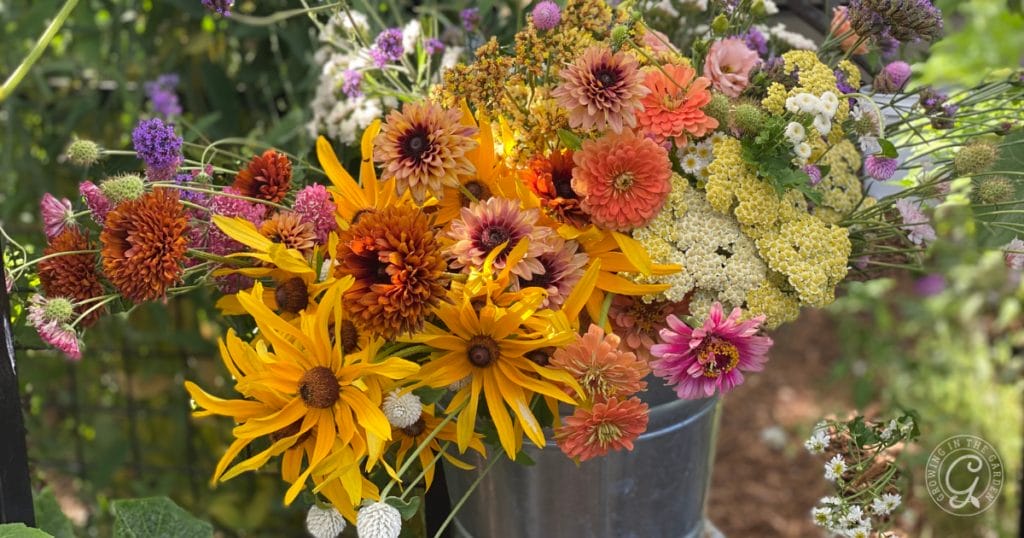
- Plant sunflowers for bright color and to attract birds—I love this branching variety for longer bloom time.
- Deadhead annuals like zinnias, salvia, coreopsis, gaillardia, marigolds, and cosmos to keep flowers blooming. Learn more about flowers that thrive in hot summers.
- Roses may begin to struggle this month. Read this guide for hot summer rose care tips.
- Enjoy hollyhocks and save seeds to share. When blooms fade, cut stalks back to 6 inches—don’t pull the plant.
- Mulch around flowers to keep roots cool and reduce water loss.
- Remove spent bulbs or corms once foliage dies back. Store indoors to replant in fall.
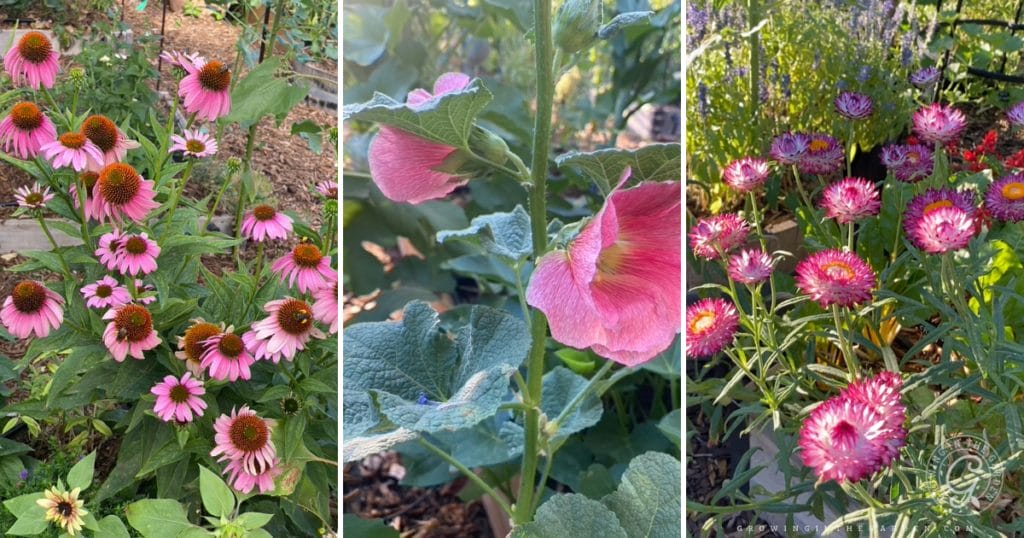
Flower Watering Guidelines:
As temperatures rise, annual flowers will require more frequent watering. Water to a depth of about 8-12 inches every 2-4 days; allow the top of the soil to dry out before watering again.
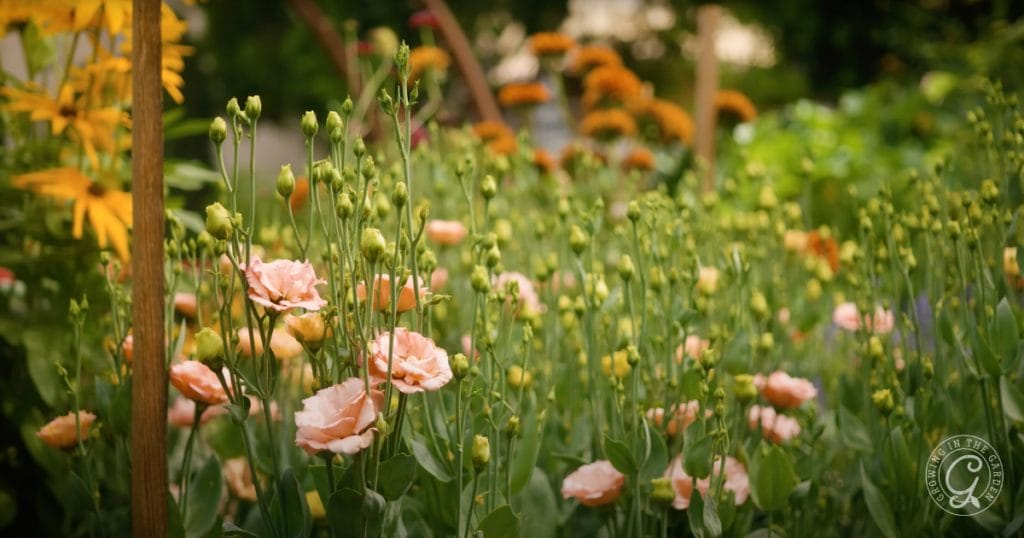
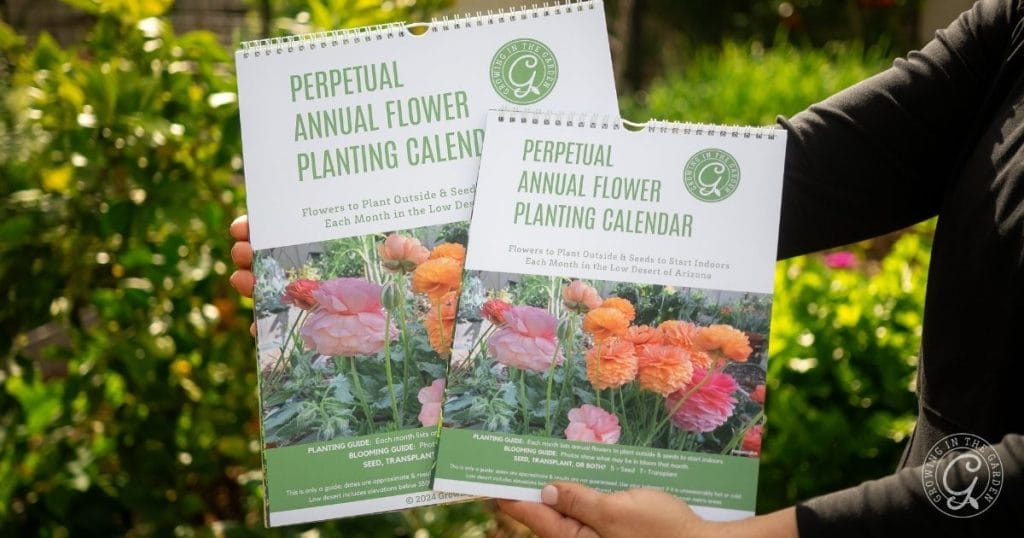
The Perpetual Annual Flower Planting Calendar, available in my shop, helps you learn when to plant flowers in the low desert of Arizona and whether to plant seeds or transplants.
Fruit & Fruit Trees in the Low Desert Arizona Garden in June
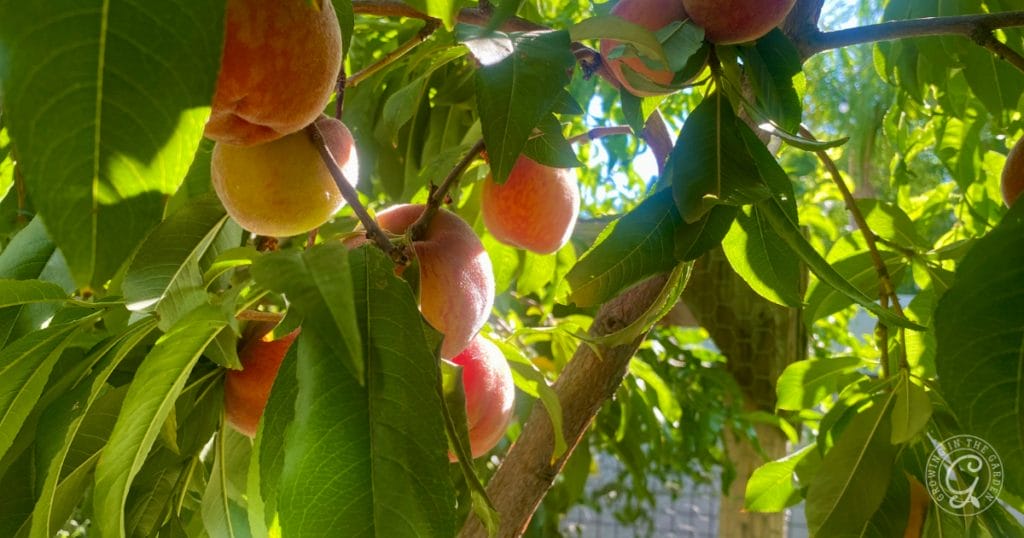
Fruit Tree Care in June
Mulch and Feed Trees:
If you haven’t already, apply mulch around your trees. Adding worm castings, compost, and mulch three times a year helps protect trees from intense summer heat. Learn more in this blog post.
Shade and Water Young Trees:
Shade newly planted fruit trees and monitor watering closely to help them survive their first summer.
Fruit to Harvest This Month
- Peaches & Figs: Continue harvesting regularly to reduce pest pressure. Learn more about growing peach trees.
- Pomegranates: Some fruit drop is normal this month. Read more about growing pomegranates.
- Anna Apples: Harvest promptly—fruit left too long can cook on the tree! Try these favorite Anna apple recipes.
- Grapes: Begin monitoring for ripeness and harvest readiness.
- Passionfruit: Look for flowers and developing fruit this month.
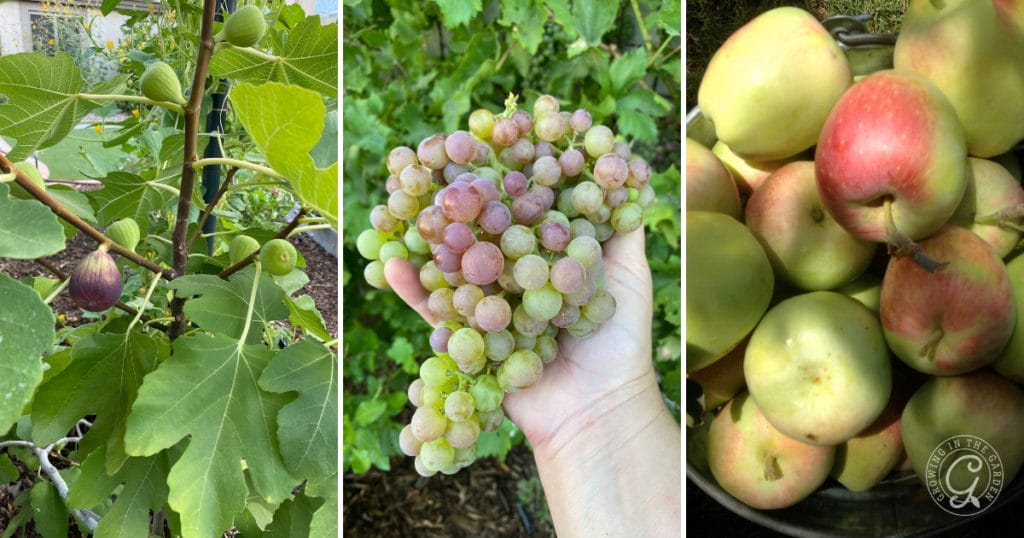
Citrus Care in June
Expect Fruit Drop:
Some fruit drop this month is normal—called “June Drop,” it’s the tree’s way of self-thinning to match what it can support through summer. No need for concern.
Water Consistently:
June is often the driest month of the year, so consistent, deep watering is essential to help citrus trees handle the extreme heat.
Remove Old Fruit:
Once citrus fruits soften, remove any remaining fruit from the tree to avoid pests and disease.
Protect Exposed Bark:
Paint or wrap exposed citrus trunks to prevent sunburn. Read this blog post to learn how to protect citrus bark from sun damage.
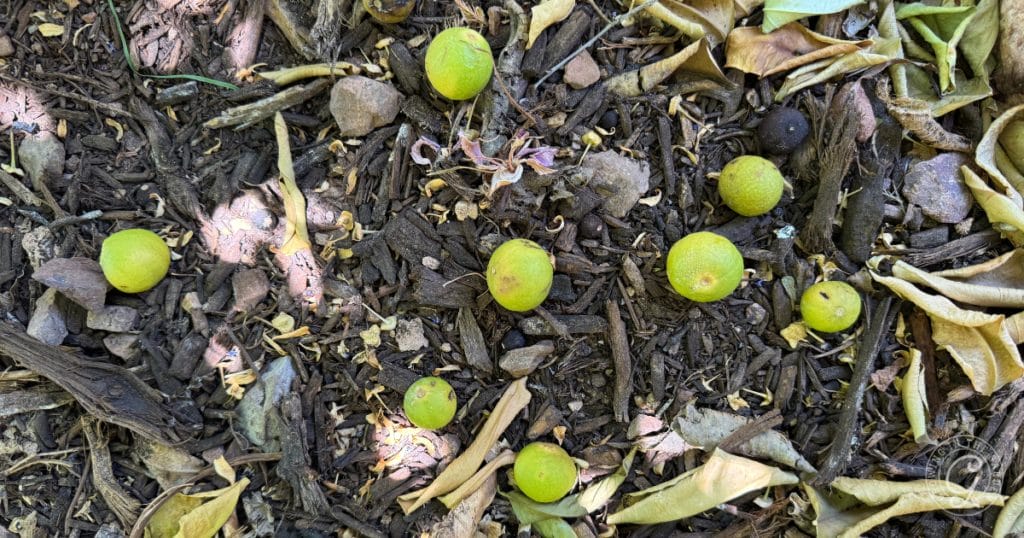
Fruit Watering Guidelines: 2, 3
Monitor your fruit trees for signs of water stress. Leaf curling is usually the first noticeable sign. Wet the soil from the tree trunk to just past the tree’s drip line.
- Established citrus trees should be watered once every 7-14 days to a 2-3 feet depth.
- Water annual fruit and high water use vines every 2-5 days to a depth of 8-12″.
- Water established fruit trees every 7-10 days to a depth of 18-24″.
- Grape vines need deep watering every 5 days.
- Water annual fruit and high water use vines every 2-5 days to a depth of 8-12″.

Herb Gardening in the Low Desert, Arizona Garden in June
- Keep basil cut back above two sets of leaves to encourage branching and a full plant.
- Allow bolting/flowering dill, cilantro, fennel, and parsley to remain in the garden. This is one of the best ways to attract beneficial insects to your garden; learn more in this blog post.
- Harvest perennial herbs like sage, rosemary & thyme lightly throughout the summer. Delay heavy pruning until fall.
- Harvest oregano this month. It will flower soon if it hasn’t already. Enjoy and preserve the harvest by dehydrating or freeze-drying.
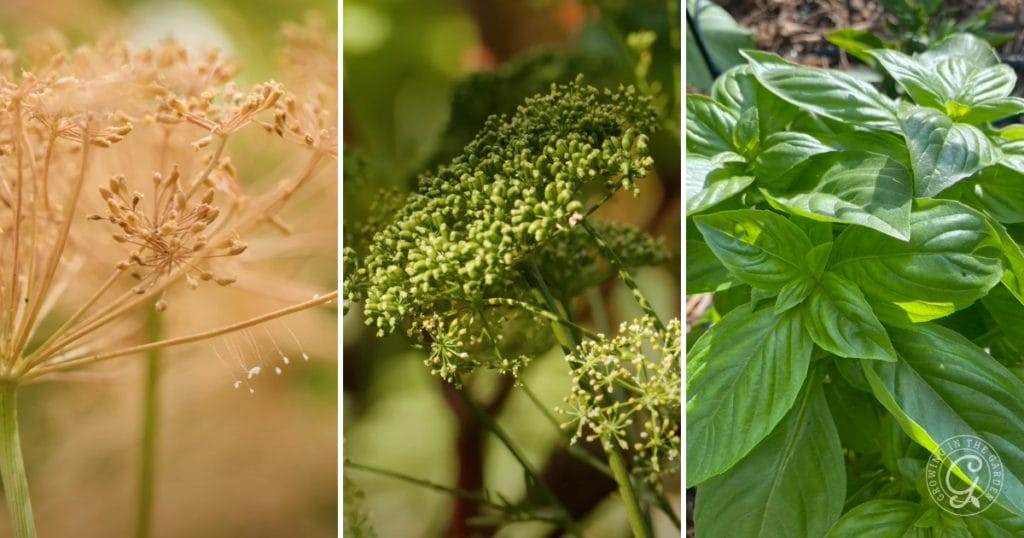
Herb Watering Guidelines:
- As temperatures heat up, annual herbs will need more frequent watering. Water to a depth of about 8-12 inches every 2-4 days; allow the top of the soil to dry out before watering again.
- Water desert-adapted landscape perennial herbs (like rosemary) every 7-21 days (water to a depth of 18-24″).
- Many Mediterranean herbs, such as sage, rosemary, lavender, oregano, and thyme, are more likely to die from overwatering and root rot in the summer than from underwatering. Take care not to overwater them.
Landscape Plants in the Low Desert Arizona Garden in June
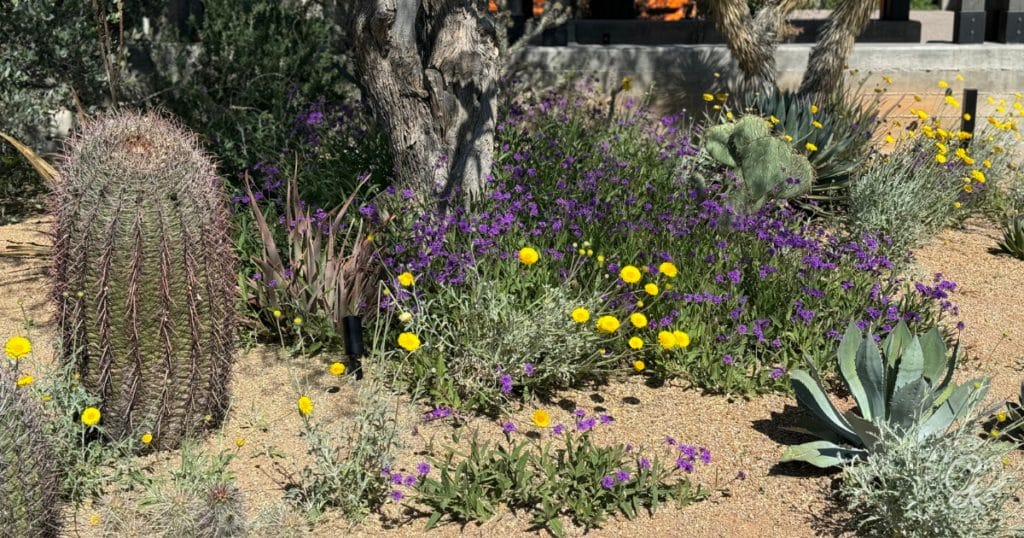
Hold Off on Pruning and Fertilizing:
Avoid pruning or fertilizing trees, shrubs, and landscape plants this month. It encourages tender new growth that’s easily sunburned when temperatures exceed 100°F (38°C).
Don’t Plant (With One Exception):
June is not the time to add new plants, trees, or shrubs—heat stress makes it difficult for them to establish.
- Exception: Palms. They thrive when planted in warm soil. Keep roots well-hydrated and support the plant while it establishes.
Watch for Stinknet (Oncosiphon piluliferum):
If you see stinknet, pull and dispose of it immediately—before it goes to seed. If the plant is already dry, handle it carefully, bag it, and toss it in the trash to avoid spreading thousands of seeds.
Considering Bermuda Grass Removal?
Now’s a great time to start. Learn more about removing Bermuda grass in this blog post.
Shade for Young Plantings:
Provide shade for any plantings less than 1 year old if they show signs of stress. Monitor the root ball closely to prevent it from drying out. This blog post outlines effective shade solutions
Landscape Watering Guidelines: 2
- Give landscape plants a long, deep soak at the beginning of the month to prepare them for June’s hot, dry weather. Water should penetrate below the recommended 2-3 foot normal depths to leach the salts that build up in root zones and recharge the dry soil.
- Desert-adapted trees, shrubs & vines every 7-21 days (water to a depth of 24-36″ trees / 18-24″ shrubs / 8-12″ vines).
- High water use trees every 7-10 days (water to a depth of 18-24″).
- High water use shrubs every 5-7 days (water to a depth of 8-12″).
- High water use vines every 2-5 days (water to a depth of 8-12″).

Sources:
1 – For further reading, please refer to the original article: “University of Delaware Cooperative Extension. (2023). Key Strategies for Soybean Management.” https://sites.udel.edu/weeklycropupdate/?p=4489.
2 – For additional information on watering practices, visit: “Association of Municipal Water Users Authority. (2023). Landscaping with Style in the Arizona Desert.” https://www.amwua.org/landscaping-with-style.
3 – https://extension.arizona.edu/sites/extension.arizona.edu/files/pubs/az1151-2021%20%282%29.pdf
If this post about low desert Arizona gardening in June was helpful, please share it.
The post Arizona Garden in June appeared first on Growing In The Garden.